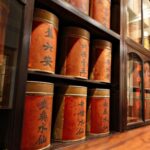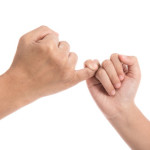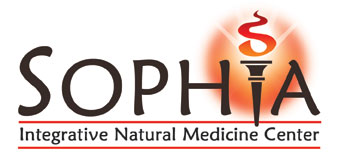5 Things You Didn’t Know About Acupuncture
When it comes to understanding Acupuncture, what comes to mind? Most likely, you’re thinking about tiny pins that are placed on the body to promote healing and well being. Am I right? Some of you may be saying to yourself, ” Well… yes, but Acupuncture looks painful, unscientific, and downright crazy.”
Whatsoever the case may be, I will try to solve any confusion or misconceptions about this ancient medical practice. Today, I will share with you 5 simple things that you didn’t know about Acupuncture!
1. What is Traditional Chinese Medicine?
 For over 4,000 years, Traditional Chinese Medicine (TCM) has been employed to effectively handle several types of medical ailments. It has gone above and beyond to continually provide relief for many modern conditions such as musculoskeletal pain, mental-emotional issues, fertility, stress, and cancer care (integrative oncology). The scope of the treatment does not just end with Acupuncture, but includes Herbal Medicine, Manual Therapy (Tui-Na), Cupping, Moxa, Eastern dietary-counseling, & lifestyle recommendations.
For over 4,000 years, Traditional Chinese Medicine (TCM) has been employed to effectively handle several types of medical ailments. It has gone above and beyond to continually provide relief for many modern conditions such as musculoskeletal pain, mental-emotional issues, fertility, stress, and cancer care (integrative oncology). The scope of the treatment does not just end with Acupuncture, but includes Herbal Medicine, Manual Therapy (Tui-Na), Cupping, Moxa, Eastern dietary-counseling, & lifestyle recommendations.
2. Acupuncture Affects The Central Nervous System
According to modern research, Acupuncture offers a comprehensive treatment strategy that scientific-based evidence can now start to explain. It’s exciting! Acupuncture works by calming down the central nervous system and helps encourage the release of pain-killing opioid neuropeptides. In other words, Acupuncture directly communicates and speaks to the body and brain. For instance, in Traditional Chinese Medicine (TCM), we believe that there are many network channels that flow up and down throughout the entire human frame. By triggering an Acupuncture point, we can influence various organs and other body-systems.
However, scientifically, once a needle is inserted in the body, it stimulates nearby bundles of  nerves. These nerves are intimately connected with the central nervous system and the brain. As we know, the brain controls the whole body. Thus, Acupuncture impacts certain regions and receptors in the brain to actively release pain-killing and feel-good endorphins to aid, promote, and speed up the healing process. It’s a very safe and non-invasive procedure that yields great medical results.
nerves. These nerves are intimately connected with the central nervous system and the brain. As we know, the brain controls the whole body. Thus, Acupuncture impacts certain regions and receptors in the brain to actively release pain-killing and feel-good endorphins to aid, promote, and speed up the healing process. It’s a very safe and non-invasive procedure that yields great medical results.
3. Blood Flow = Healing
In the West, ice is known to reduce pain and inflammation for many musculoskeletal injuries. However, in Chinese Medicine, ice constricts blood flow and inhibits proper healing. When speaking on behalf of healing chronic injuries, heat and blood flow are considered the gold standard during an Acupuncture treatment to improve the rate of recovery.
Short term, ice is a great component to deal with the acute (beginning) stage of any injury. But, after the initial onset, we recommend a course of Acupuncture treatments and warmer agents such as Moxa to heal the body. The theory is that heat dilates the blood vessels which in turn, promotes blood flow. Thus, during an Acupuncture treatment, the blood goes to the injured site and heals the area quicker (blood flow = healing). Conversely, too much icing may potentially lead to a stubborn chronic condition that just lingers.
In essence, heat is an essential element for any successful pain-management strategy. For example, during an Acupuncture session, it is common to have a TDP heat-lamp on the injured area during the treatment (this is a key factor in healing, and it’s also relaxing). Remember, heat heals, while, cold constricts.
4. Acupuncture Doesn’t Hurt
 I know, many of us have been led to believe that Acupuncture is a painful therapy. However, most of the time, you don’t even feel the pins go in. Pinky swear! Instead, many patients report a feeling of deep relaxation similar to meditation during a session.
I know, many of us have been led to believe that Acupuncture is a painful therapy. However, most of the time, you don’t even feel the pins go in. Pinky swear! Instead, many patients report a feeling of deep relaxation similar to meditation during a session.
During a treatment, the client may even feel subtle sensations such as warm and/or tingling in the body. All normal and great signs of proper healing. On rare occasions, you may feel a slight pinch sensation when the pin is inserted. The mild pain sensation will almost always go away within seconds. Once the needles are in, you will take a power nap for about 25-27 minutes and wake up feeling refreshed and re-energized.
5. Chinese Medicine Works Best When Done Consistently
Similar to chiropractic care, physical therapy, or exercise, Acupuncture works best when done consistently over a long period of time. Many patients have tried Acupuncture once or twice and say, “It doesn’t work.” Yes, sometimes Acupuncture doesn’t work fully right away. That’s okay. This is because Chinese Medicine works naturally with the cycles of your body. As a general rule of thumb, if the condition is more recent, and acute, the treatments should work quickly. However, the more chronic an ailment is, the longer the treatment course will be. Other factors to take note when considering the prognosis and treatment regiment are age, overall health, and the lifestyle the patient lives.
In practice, we recommend more treatments at the beginning (two or three treatments per week) to manage the issue. Then, we will cut down the treatments to once a week or every other week as a maintenance and wellness approach. Also, if one is coming in for musculoskeletal pain, we don’t treat the affected area directly. Rather, we insert pins along the limbs to open up Acupuncture channels that correspond with that specific injured area. In this way, we won’t aggravate any acute flare-ups and we increase the healing potential.
Dr. Chris, L.Ac.
